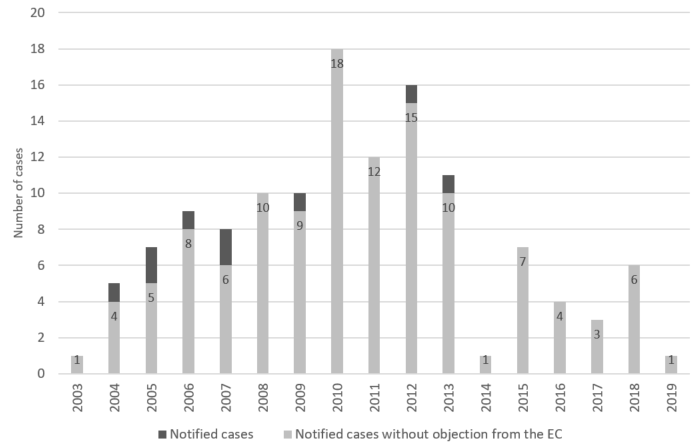Assessing fifteen years of State Aid for broadband networks in the European Union: a quantitative analysis, joint with Marc Bourreau and Richard Feasey. Telecommunications Policy 44 (7), 101974.
In this paper, we document how public funds, or State Aid, have been used to support the deployment of broadband infrastructure in Europe since 2003. Our descriptive analysis relies on a unique data set on all the broadband measures notified to the European Commission by Member States between 2003 and 2018. We identify two waves of State Aid for broadband: one for the deployment of basic broadband, and a more recent one for the roll out of next-generation access networks. The use of State Aid is very heterogeneous across Member States, with a few large countries representing the bulk of the cases. The objective of most plans is to expand broadband coverage. The typical project relies mainly on public funds, and involves a direct grant, an open tender, and a contract for 3 to 5 years. Access obligations are imposed on networks deployed with State Aid, using a benchmarking approach in most cases. Finally, we show that notifications are associated with a relatively high level of broadband coverage in notifying countries, suggesting that public investment is taking over from private investment.
